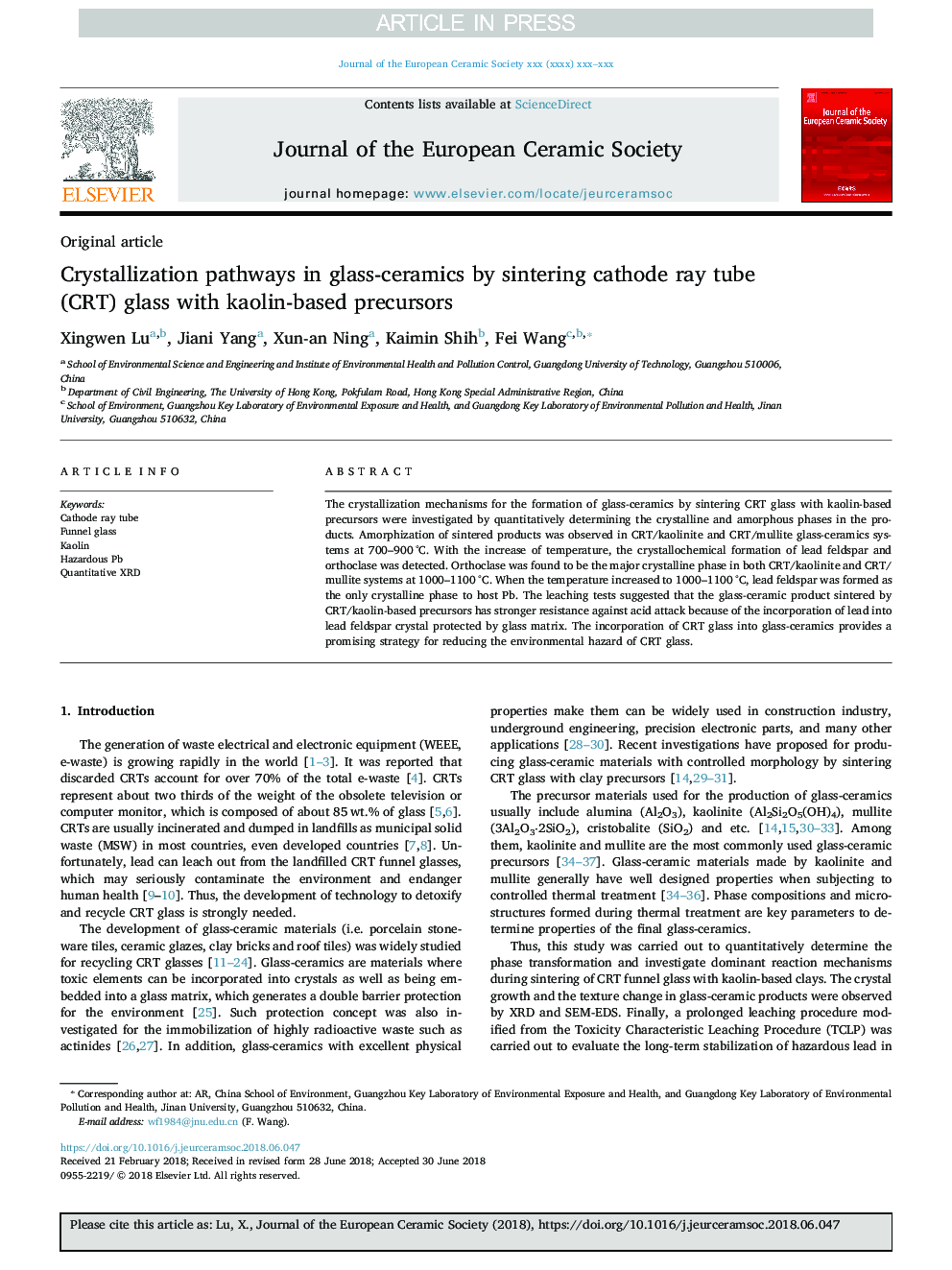| Article ID | Journal | Published Year | Pages | File Type |
|---|---|---|---|---|
| 8948570 | Journal of the European Ceramic Society | 2018 | 8 Pages |
Abstract
The crystallization mechanisms for the formation of glass-ceramics by sintering CRT glass with kaolin-based precursors were investigated by quantitatively determining the crystalline and amorphous phases in the products. Amorphization of sintered products was observed in CRT/kaolinite and CRT/mullite glass-ceramics systems at 700-900â¯Â°C. With the increase of temperature, the crystallochemical formation of lead feldspar and orthoclase was detected. Orthoclase was found to be the major crystalline phase in both CRT/kaolinite and CRT/mullite systems at 1000-1100â¯Â°C. When the temperature increased to 1000-1100â¯Â°C, lead feldspar was formed as the only crystalline phase to host Pb. The leaching tests suggested that the glass-ceramic product sintered by CRT/kaolin-based precursors has stronger resistance against acid attack because of the incorporation of lead into lead feldspar crystal protected by glass matrix. The incorporation of CRT glass into glass-ceramics provides a promising strategy for reducing the environmental hazard of CRT glass.
Related Topics
Physical Sciences and Engineering
Materials Science
Ceramics and Composites
Authors
Xingwen Lu, Jiani Yang, Xun-an Ning, Kaimin Shih, Fei Wang,
